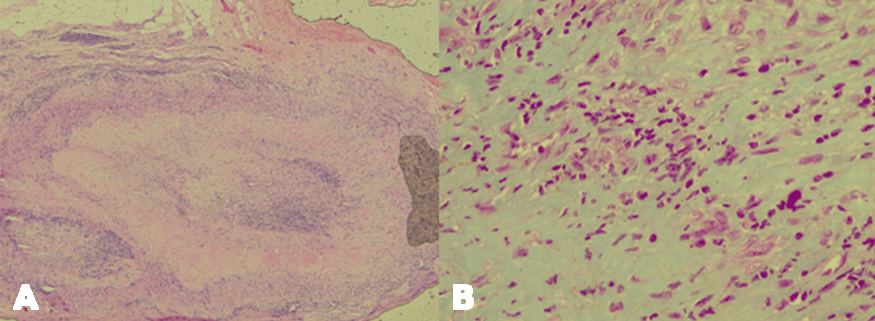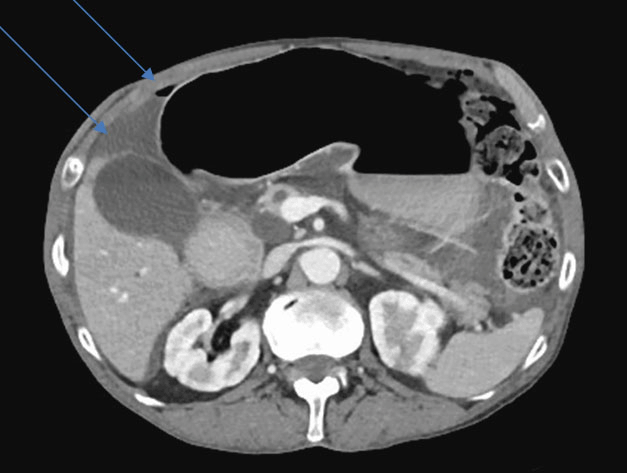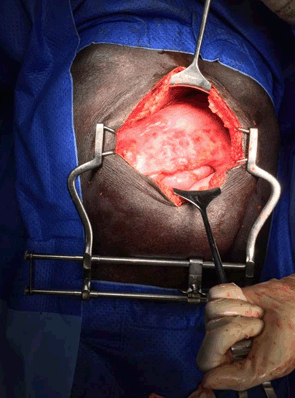 |
Case Report
Bilateral irreversible visual loss due to arteritic anterior optic ischemic neuropathy
1 Professor, Department of Ophthalmology, “Iuliu HaÈ›ieganuâ€, Cluj-Napoca, Cluj, Romania
2 Senior ophthalmologist, Department of Ophthalmology, Emergency County Hospital, Cluj-Napoca, Cluj, Romania
3 Assistant Professor, Department of Ophthalmology, “Iuliu Hațieganu†University of Medicine and Pharmacy, Cluj-Napoca, Cluj, Romania
Address correspondence to:
Simona Delia Nicoară
8, V. BabeÈ™ Street, Cluj-Napoca, Cluj, 400012,
Romania
Message to Corresponding Author
Article ID: 100054Z06SN2018
Access full text article on other devices

Access PDF of article on other devices

How to cite this article
Nicoară SD, Damian I. Bilateral irreversible visual loss due to arteritic anterior optic ischemic neuropathy. Case Rep Int 2018;7:100054Z06SN2018.ABSTRACT
Introduction: Anterior optic ischemic neuropathy (AOIN) is the most frequent cause of visual loss in giant cell arteritis (GCA). As blindness is rarely reversible, the main therapeutic goal is to prevent bilateral disease by immediate initiation of high-dose intravenous steroids. Approximately, one third of patients present with bilateral visual impairment.
Case Report: A 77-year-old patient, came to the Ophthalmology Emergency Room for sudden loss of vision in the left eye (OS) to no light perception (NLP) with two days duration and significant narrowing of the visual field in the right eye (OD) with 10 hours duration. Fundus examination revealed swelling and pallor of the optic disc in both eyes (OU). Laboratory examination showed elevated ESR (56 mm/h) and CRP (5.24 mg/dl). Temporal artery biopsy (TAB) proved granulomas and fibrosis within the vessel wall. Immediate Methylprednisolon 1gm was administered intravenously for five days, followed by oral Prednisone 1mg/kg for four weeks with tapering of 10 mg per month. The patient was put on diabetic and low sodium regimen. During the 3rd day of treatment, vision OD dropped to NLP. Despite continuing systemic steroid therapy, vision remained unchanged. Two months following discharge, the patient died from myocardial infarction.
Conclusion: Irreversible bilateral blindness occurred in a patient with arteritic AOIN, while he was on systemic steroids, probably due to late presentation, when vision was already affected bilaterally.
Keywords: Arteritic anterior optic ischemic neuropathy, Bilateral blindness, Horton disease
INTRODUCTION
Giant cell arteritis (GCA) was first described by Hutchinson in 1890 [1],[2], but the first histological evidence was presented by Horton in 1932 [2],[3],[4]. GCA touches typically the branches of the extracranial carotid artery: ophthalmic, posterior ciliary and superficial temporal [5],[6]. Anterior optic ischemic neuropathy (AOIN) is the most frequent cause of visual loss in GCA [7]. Being a systemic disease, in GCA the rate of bilateral involvement is higher as in non-arteritic AOIN and it usually occurs within hours-days, carrying the risk of severe visual impairment [3]. As blindness is rarely reversible [8], the main therapeutic goal is to prevent bilateral disease by immediate initiation of high-dose intravenous steroids. Approximately, one third of patients present with bilateral visual impairment [3],[9]. We report the case of a patient who lost vision in both eyes as a result of arteritic AOIN, while he was on high doses of intravenous steroid.
CASE REPORT
A 77-year-old Caucasian patient, addressed to the Emergency Room for sudden loss of vision in the left eye (OS) with two days duration and significant narrowing of the visual field in the right eye (OD) with 10 hours duration. For the last month, the patient experienced headache with tenderness in the territory of the temporal arteries, jaw claudication, weight loss (5 kilos), fatigue, fever and anorexia. At presentation, visual acuity was in OD: 0.8 in the decimal system corresponding to +0.1 LogMar with the Snellen chart and in OS: no light perception (NLP). Visual fields were non recordable in both eyes (OU) and intraocular pressure, 18 mmHg OU. Anterior segment proved slow pupil reaction to light OD and afferent pupil defect OS. Fundus examination revealed swelling and pallor of the optic disc in both eyes (OU) (Figure 1A-B). Laboratory examination showed elevated ESR (56 mm/h) and CRP (5.24 mg/dl). Temporal artery biopsy (TAB) was carried out the next day upon admission and it showed fibrosis, significant narrowing and lumen occlusion (Figure 2A) and granulomas of T-cells, macrophages, lymphocytes and multinucleated giant cells (Figure 2B).
Immediate Methylprednisolon 1gm was administered intravenously for five days, followed by oral Prednisone 1mg/kg for four weeks with tapering of 10 mg per month. The patient was put on diabetic and low sodium regimen.
During the third day of treatment, vision OD dropped to NLP. Despite continuing systemic steroid therapy, vision remained unchanged. Two months following discharge, the patient died from myocardial infarction.
DISCUSSION
GCA has a yearly incidence of 21.7/100,000 [10]. Ophthalmological manifestations appear in 30% of all cases, the most frequent cause of vision loss being AOIN, due to the involvement of ciliary posterior arteries which supply the optic nerve [3],[7]. The risk factors for GCA are age ≥ 50 years, Caucasian race and 60-70% of cases are women [3],[6],[8],[9],[11]. However, ophthalmological manifestations are more severe and more frequent in men [12].
Research proved that the underlying process in GCA is T-cell dependent [3],[8],[13]. Within the vascular wall, there are dendritic cells that identify any foreign cells and “teach” T-cells to attack them [8],[13]. In GCA, for unknown reasons, dendritic cells “teach” T-cells to attack selfcells, with subsequent development of granulomatous infiltrates within the vascular wall [8]. This translates into vessel remodeling by fibrosis, scarring, narrowing and occlusion, which lead to optic nerve ischemia [14].
Our patient met all the five features established by the American College of Rheumatology as diagnostic criteria for GCA: age ≥ 50 years, recent onset headache, tenderness and lack of pulse in the temporal artery, ESR > 50 mm/h, abnormal TAB [6],[15]. Additionally, he had jaw claudication which is an alternative diagnostic criteria for GCA [3]. He also displayed non-specific manifestations, which were cited in 40% of cases: weight loss, fatigue, fever and anorexia. The diagnosis of GCA was made on clinical grounds [5]. Although, TAB is the gold standard diagnostic tool for GCA [13], due to segmental disease [2],[16] and to the high risk of immediate visual loss, systemic high dose steroid therapy was initiated urgently, before the histopathology result was available. TAB is most beneficial when there is a degree of diagnostic uncertainty, an atypical presentation or when highdose systemic steroids may be contraindicated, such as osteoporosis or diabetes [11].
Given the ischemic nature of a disease which is underlined by irreversible tissue changes, the main therapeutic goal is to prevent the involvement of the fellow eye. One study showed that when treatment was initiated within 3- 4 days from onset, visual acuity and visual field improved only in 4% of patients [17]. There is no standardized scheme for the treatment of GCA. When there is risk of vision loss, it is recommended to start with high intravenous steroid doses, followed by cautious tapering, according to the individual response, evaluated by ESR and CRP. The average duration of treatment is 2-3 years [5].
While he was under maximal intravenous methylprednisolone, the patient lost central vision in the fellow eye, too. Visual loss with high-dose intravenous methylprednisolone was reported in 27% of cases [18]. Our patient described crises of amaurosisfugax prior the actual unilateral sudden visual loss, which are associated with worse functional prognosis [5].
Unfortunately, the patient died two months following discharge from myocardial infarction. Studies reported an increased mortality in the first two years following diagnosis, but not with longer follow up [19],[20]. The main causes of death are diseases of the circulatory system: myocardial infarction, aortic aneurysm, stroke [19]. Prognosis depends on the precocity of establishing treatment and on the severity of symptoms upon presentation. Our patient came by the time the disease was already bilateral and falls within the low percentage of cases with visual deterioration during the first week of treatment.
CONCLUSION
Irreversible bilateral blindness occurred in a patient with arteritic AOIN, while he was on systemic steroids, probably due to late presentation, when vision was already affected bilaterally. Death occurred due to a cardiac complication related to Horton disease: myocardial infarction.
REFERENCE
1.
Tehrani R, Ostrowski RA, Hariman R, Jay WM. Giant cell arteritis. Semin Ophthalmol 2008 Mar–Apr;23(2):99–10. [CrossRef]
[Pubmed]

2.
Pineles SL, Arnold AC. Giant cell arteritis. Int Ophthalmol Clin 2007 Fall;47(4):105–19. [CrossRef]
[Pubmed]

3.
Matson M, Fujimoto L. Bilateral arteritic anterior ischemic optic neuropathy. Optometry 2011 Oct;82(10):622–31.
[Pubmed]

4.
Kawasaki A, Purvin V. Giant cell arteritis: An updated review. Acta Ophthalmol 2009 Feb;87(1):13–32. [CrossRef]
[Pubmed]

5.
Nesher G. The diagnosis and classification of giant cell arteritis. J Autoimmun 2014 Feb–Mar;48–49:73–5. [CrossRef]
[Pubmed]

6.
Cho HJ, Bloomberg J, Nichols J. Giant cell arteritis. Dis Mon 2017 Mar;63(3):88–91. [CrossRef]
[Pubmed]

7.
Hayreh SS. Ischemic optic neuropathy. Prog Retin Eye Res 2009 Jan;28(1):34–62. [CrossRef]
[Pubmed]

8.
Ninan J, Lester S, Hill C. Giant cell arteritis. Best Pract Res Clin Rheumatol 2016 Feb;30(1):169–88. [CrossRef]
[Pubmed]

9.
Chew SS, Kerr NM, Danesh-Meyer HV. Giant cell arteritis. J Clin Neurosci 2009 Oct;16(10):1263–8. [CrossRef]
[Pubmed]

10.
Le K, Bools LM, Lynn AB, Clancy TV, Hooks WB 3rd, Hope WW. The effect of temporal artery biopsy on the treatment of temporal arteritis. Am J Surg 2015 Feb;209(2):338–41. [CrossRef]
[Pubmed]

11.
Hussain O, McKay A, Fairburn K, Doyle P, Orr R. Diagnosis of giant cell arteritis: When should we biopsy the temporal artery? Br J Oral Maxillofac Surg 2016 Apr;54(3):327–30. [CrossRef]
[Pubmed]

12.
Nir-Paz R, Gross A, Chajek-Shaul T. Sex differences in giant cell arteritis. J Rheumatol 2002 Jun;29(6):1219–23.
[Pubmed]

13.
Frohman L, Wong AB, Matheos K, Leon-Alvarado LG, Danesh-Meyer HV. New developments in giant cell arteritis. Surv Ophthalmol 2016 Jul–Aug;61(4):400–21. [CrossRef]
[Pubmed]

14.
Chang KK, Rizzo JF 3rd. Recent advances in the immunopathology of giant cell arteritis. Int Ophthalmol Clin 2009 Winter;49(1):99–109. [CrossRef]
[Pubmed]

15.
Hunder GG, Bloch DA, Michel BA, et al. The American College of Rheumatology 1990 criteria for the classification of giant cell arteritis. Arthritis Rheum 1990 Aug;33(8):1122–8. [CrossRef]
[Pubmed]

16.
Rucker JC, Biousse V, Newman NJ. Ischemic optic neuropathies. Curr Opin Neurol 2004 Feb;17(1):27–35.
[Pubmed]

17.
Hayreh SS, Zimmerman B, Kardon RH. Visual improvement with corticosteroid therapy in giant cell arteritis. Report of a large study and review of literature. Acta Ophthalmol Scand 2002 Aug;80(4):355–67. [CrossRef]
[Pubmed]

18.
Danesh-Meyer H, Savino PJ, Gamble GG. Poor prognosis of visual outcome after visual loss from giant cell arteritis. Ophthalmology 2005 Jun;112(6):1098–103. [CrossRef]
[Pubmed]

19.
20.
Hill CL, Black RJ, Nossent JC, et al. Risk of mortality in patients with giant cell arteritis: A systematic review and meta-analysis. Semin Arthritis Rheum 2017 Feb;46(4):513–“9. [CrossRef]
[Pubmed]

SUGGESTED READING
- https://www.ncbi.nlm.nih.gov/pmc/articles/PMC5636726/
- https://www.ncbi.nlm.nih.gov/pmc/articles/PMC3014598/
- https://emedicine.medscape.com/article/1216891-overview
- https://www.intechopen.com/books/updates-in-the-diagnosis-and-treatment-of-vasculitis/giant-cell-arteritis-and-arteritic-anterior-ischemic-optic-neuropathies
- https://www.sciencedirect.com/topics/medicine-and-dentistry/arteritic-anterior-ischemic-optic-neuropathy
- https://my.clevelandclinic.org/health/ diseases/15770-anterior-ischemic-optic-neuropathy
- http://www.reviewofophthalmology.com
- http://journals.sfu.ca/paao/index.php/journal/article/view/354
- http://cdmbuntu.lib.utah.edu/utils/getfile/collection/ehsl-nam/id/94/filename/5.pdf
SUPPORTING INFORMATION
Author Contributions
Simona Delia Nicoară - Substantial contributions to conception and design, Acquisition of data, Analysis of data, Interpretation of data, Drafting the article, Revising it critically for important intellectual content, Final approval of the version to be published
Ioana Damian - Acquisition of data, Revising it critically for important intellectual content, Final approval of the version to be published
Guarantor of SubmissionThe corresponding author is the guarantor of submission.
Source of SupportNone
Consent StatementWritten informed consent was obtained from the patient for publication of this case report.
Data AvailabilityAll relevant data are within the paper and its Supporting Information files.
Conflict of InterestAuthors declare no conflict of interest.
Copyright© 2018 Simona Delia Nicoară et al. This article is distributed under the terms of Creative Commons Attribution License which permits unrestricted use, distribution and reproduction in any medium provided the original author(s) and original publisher are properly credited. Please see the copyright policy on the journal website for more information.







